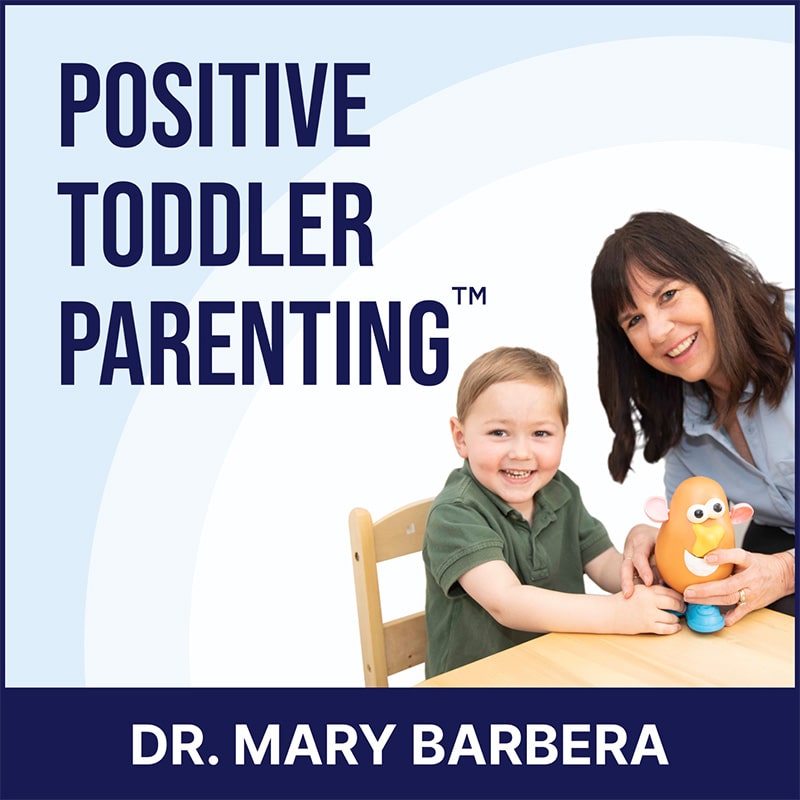Are you struggling with your toddler hitting you or throwing things? Or maybe you have a preschooler or older child with development delays who is engaging in these problem behaviors when they are frustrated.
A common question we get is how can we stop a toddler from hitting and throwing?
Well first, you aren’t alone! Rachel Smith, the Program Director for our Positive Toddler Parenting™ joins me on the show to discuss Everett, her son, and some of the questions she had related to hitting and throwing when he was 3 years old. You will often see Everett throughout our podcast and course materials! And a fun fact, Everett, is featured in our cover photo for our newly-named podcast.
Remember, you’re a great parent or a great professional even when things don’t go perfectly every time. So come join us as we discuss how Rachel stopped her son from throwing and hitting using positive, child-friendly strategies.
First Steps To Stop Hitting and Throwing
When I discuss problem behaviors, I really talk the most about prevention and preventing the hitting and throwing. But what happens when you’re in the thick of a problem behavior moment? This can be challenging for professionals and even the most informed parents, because safety and de-escalation become a priority. Many times the attention we divert to throwing, hitting, or other problem behaviors becomes a big reinforcement.
In the case of Everett, at the time of his hitting, he was 3 years old, and he had a new baby brother and was heavily reinforced by direct attention from his mom. This means that he may not have had the attention he wanted, but when he threw, he got the attention he was seeking.
Additionally, Rachel was allowing Everett to bring his toys into places with him, in the case of this behavior, these toys became weapons. When a child brings toys for comfort, their hands are occupied with them and they are in control of these items, which is another reinforcer for problem behavior.
Strategies for Stopping Toddler Hitting and Throwing
At two years old, Everett, had speech delays but with modified steps, supports, and reinforcements the strategies Rachel and I discuss in the episode worked well for him and can work for any child regardless of delays or diagnosis.
Step 1 for Rachel’s family was to talk it out. In a neutral environment, the family discussed throwing and hitting and the rules surrounding this behavior. They had a low pressure conversation where Everett understood he would be reminded of these rules from now on during these behaviors.
Step 2 was following through with the new rules. This meant as soon as a toy was thrown, mom or dad or whoever was the caretaker at the time would remove ALL toys from Everett’s hands and remove attention until Everett was calm. For example, if Everett threw a dinosaur, the train was taken from his other hand and mom and dad carried on a conversation while giving Everett space to calm down. When Everett was calm enough to ask for his toy back, he’d get the toy and the situation would be resolved and everyone would move on.
Removing Attention from Problem Behavior
Attention is a huge reinforcer for problem behavior. This attention can come in many forms. Once you’ve stopped a problem behavior, the child does not get any attention surrounding it and the behavior itself does not get any attention. This means do not talk about the behavior, don’t read books about it, don’t talk about it later, simply ignore it while keeping the child safe. When a problem behavior is resolved at the moment, it is not brought up again. Using these techniques, Rachel was able to reduce Everett’s throwing and hitting from three times a day to zero in just a few days. These strategies can work for anyone!
Please remember, if you find this episode helpful, help us get the word out! Find us on social media, on various channels and podcast hosting apps. Leave comments, likes, and share this episode with anyone who might benefit!

Rachel Smith on the Positive Toddler Parenting™ Podcast
Rachel Smith is a married mom of 2 boys. She has an elementary special education degree as well as a Reading Specialist masters’ degree. She is the Program Director for the Positive Toddler Parenting™ programs. She used the program herself when her oldest son, Everett, was not using vocal language on time.
YOU’LL LEARN
- How to stop a toddler from hitting
- How to stop problem behaviors.
- How to stop throwing behaviors
- How to stop reinforcing problem behaviors.
- Why you should remove attention during problem behaviors.
- What are simple triggers for problem behavior?
- Why good parents and good professionals still struggle with problem behavior.
- What are interventions for attention seeking behavior?







